Types of Chillies
I am going to town this year. I am growing over thirty-five types of Chillies. Some are overwintered plants, but I have also started thirty new varieties I have never grown before. These range from the mild Bellaforma (700 SHU) to the superhot Carolina reaper (which has an average Scoville heat rating of 1.64 million SHU).
There are many other Scoville ratings for the other Chilli varieties I am trying put between these two extremes. These range from medium to very hot. They cover most domesticated Chilli species, including C annuum, C pubescens, C baccatum, C chinense and C frutescens.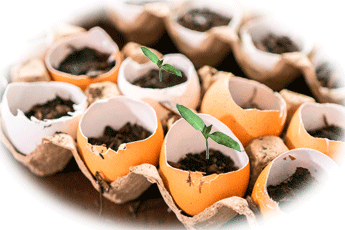
I am growing more superhots this season than I usually do. It’s not that I am a fan of the superhots heat levels; it’s more because these Chillies are so interesting. They certainly seem more challenging to grow than the milder types of Chilllies, but that just adds to the fun. I also want to experiment more with using superhots in cooking. Growing these extra superhot varieties will make this possible
The Rocotos that I am growing deserve a special mention. It is the first time I have grown C pubescens, and I must say I am impressed. In the short time these Chillies have been growing, they have done exceptionally well. They have done far better than any of the other Chillies. I can only put this down to the cold weather resistance of C pubescens. My other Chillies are now between one and two inches tall after four months of growing. The Rocotos are that height (and even taller at about 3 to 4 inches, after only ten weeks). No wonder Rocotos are so popular among British Chilli growers. They are certainly a robust species.
The varieties I am growing.
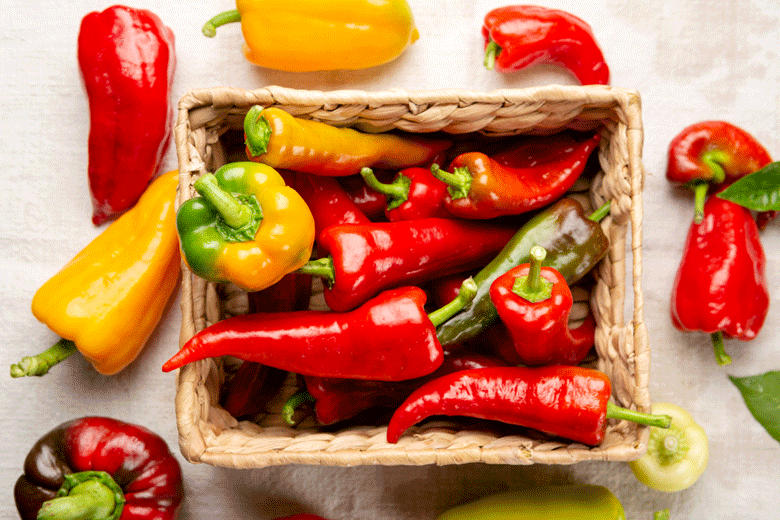 Chilli growing-2022
Chilli growing-2022
In addition to my first Bonchi (a Chilli Bonsai), which I made from a Bolivian Rainbow, I have a combination of overwintered plants, seedlings and seeds. I will start the seeds next week, which (for me) will be the official start of the 2022 Chilli growing season.
Many seed suppliers recommend starting seeds in January, February or March. Some will even state that Chilli seeds can be started as late as April. For the most part, I agree. However, I believe the hotter a Chilli is, the longer it will take to grow. It is precisely for this reason that I started most of my superhots 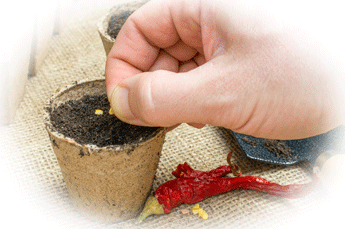 about four months ago.
about four months ago.
It is also why most of the Chillies I will only start, my remaining seeds in mid January. They are in the mild to the hot range and don’t take as long to grow. The mild to hot Chillies are either C annuum or C frutescens. The superhots and very hot Chillies are all C Chinense.
Some might not agree with starting the superhots as early as I have. I have had contact with some expert growers who don’t believe it is necessary. I am open minded here, because it is the first time I have started superhots (or any other Chilli for that matter) as early as I did for this season. I have no basis for comparison.
To make up my mind either way, I will also start some more superhots next week. I want to compare the two starting times to find out whether beginning early makes a difference. It will be interesting to find out what happens!
Hot to superhots
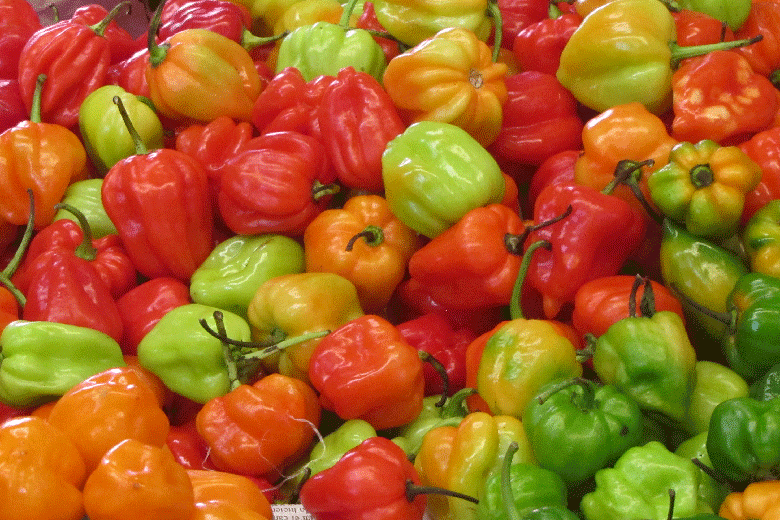
Superhots
Here I am going straight to the top of the scale in the heat charts. I am growing Carolina reapers, Brazilian Ghosts, Dorset Nagas, Trinidad Butch Taylors, Dorset Zingers, Bengle Nagas, white, peach & red Bhut Jolokias.I am also growing Moruga Scorpions. All these Chillies fall under the Capsicum Chinenese species. All, except for the Bengle Nagas (approximately 925 0000 SHU) and Brazillian Ghosts (500000 to 100000 SHU) have Scoville ratings of over 1000000 Scoville heat units. These varieties were started early, because of the superhots long seed to maturity growing periods. This certainly seems the case with these types of Chillies. Even though they were planted about four months ago, they are all only about an inch tall. It will be interesting to see how they develop
Very hot
This year, I am growing more Habaneros than I usually do. These include the Maya Red, Hainan Yellow Lantern, Paper Lanterns and Orange Habaneros. I am also growing Madame Jeanette’s (from Suriname), Caribbean Reds (Bonney Peppers, a Scotch bonnet from Jamaica), Tiger Reds and Brown Fatallis. All these Chillies are from the Capsicum chinense species and have a Schoville heat rating of about 300000 to 350000 SHU, although Carribean Reds can get to as hot as 450000 SHU.
Hot Chillies
In addition to the Rocotos, as mentioned earlier, I am also growing Thai Birds -eyes (from supermarket-bought fresh Chillies), Malawian Birds -eyes. These Chillies are from the Capsicum annuum and frutescens species and have Schoville heat ratings of between 100000 and 175 000 SHU. The previously mentioned Rocotos have a Scoville heat rating of between 30000 and 100000 SHU
Milder and overwintered Chillies
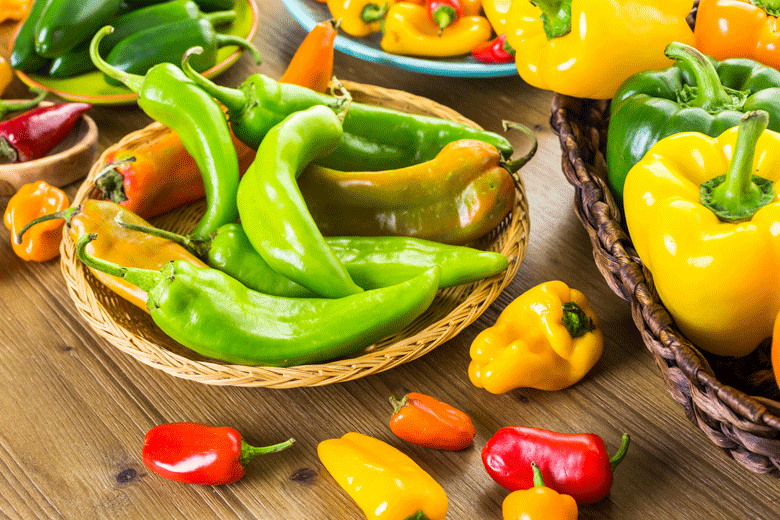
Medium
The medium Chillies I am growing are all from the Capsicum Annuum species, except the Aji Charapita. They include Pelitas (a Chilli that grows to about 60 cm in length with a Scoville heat rating of about 50000 SHU), Orange Jalapenos (heat rating about fifteen thousand SHU), Zimbabwe Blacks (a small tepin shaped Chilli with a Scoville rating of between 20000 and 300000 SHU) and Cayenne long reds (30000 SHU)
The one exception to the Capsicum annuums, the AjI Charapita, was once considered the most expensive Chilli in the world. Before recently being domesticated, it was only found in the wild in the jungles of Northern Peru. It is a small Chilli similar in size to a Chiltepin. It is yellow in colour and has a Schoville rating of 30000 to 50000 SHU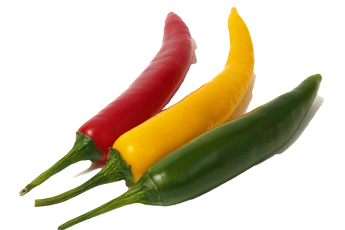
Mild Chillies
An interesting mild Chilli I am growing this year is called a Trinidad Perfume. While most of the milder Chillies fall under the Capsicum annuum species, Trinidad Perfume is Capsicum Chinense. It has all the flavour of a Scotch Bonnet, but none of the bite. It has a Schoville heat rating of only 50 to 500 SHU. Other milder Chilles I am growing from the Capascicum Chinese species are the Bellaforma and Green Trinidad. Believe it or not, the last two are Habaneros. Before I discovered these Chilles, with the exception of the Zavory (another mild Habanero), I had thought Habaneros were only hot Chillies. Not so, it turns out. The Bellaforma has a Scoville rating of about 700 SHU, and the Green Trinidad registers approximately 3000 SHU
The other milder types of Chillies from Capsicum annuum I am growing are Cherry Bombs, Tangerine Dreams, and Romano peppers,
Overwintered plants
Two yellow Scotch bonnets (Capsicum chinense), one Aji Crystal (C baccatum), a couple of Satan’s kisses (C Annuum), two Barak Chillies (Capsicum annuum) and an Apache F1 (C annuum). As far as the Scotch bonnets are concerned, this is actually their second overwintering—they were first grown in 2020. This is also the second overwintering for the Aji Crystal
Finally
With all these varieties I am growing, I will need to be very selective when it comes to deciding which plants I will take to the end of the season. I will only harden off the very best specimens. I know it will be tough to make which plants go through, but I will definitely need to cut at some, and the hardening off stage seems like the best time to make my final selection. In the meantime, it’s on with the business of getting my plants to that point.
Image credit
Eric Chaffee / CC By SA 2.0 / via Flickr

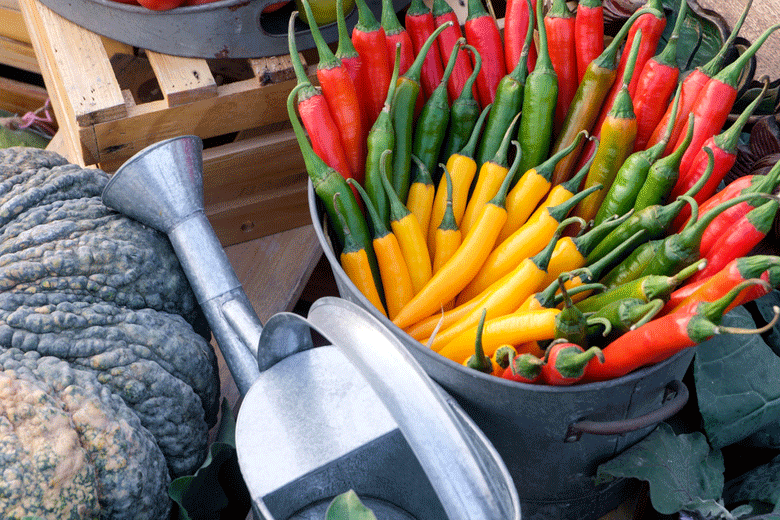
Chillies come in a wide array of varieties, each offering a unique heat level, flavor profile, and culinary application. Jalapeño peppers, with their medium heat, are popular for salsas and nachos. The fiery Habanero adds intense heat, while the milder Poblano is great for stuffing. Thai Bird’s Eye chillies bring intense spiciness to Asian dishes, and the sweet and smoky Ancho is commonly used in Mexican cuisine. The versatile Cayenne pepper suits both culinary and medicinal purposes, while the extremely hot Carolina Reaper holds the record for the world’s hottest chilli. With so many options, chili enthusiasts can explore a range of flavors and heat intensities to suit their preferences in various dishes.